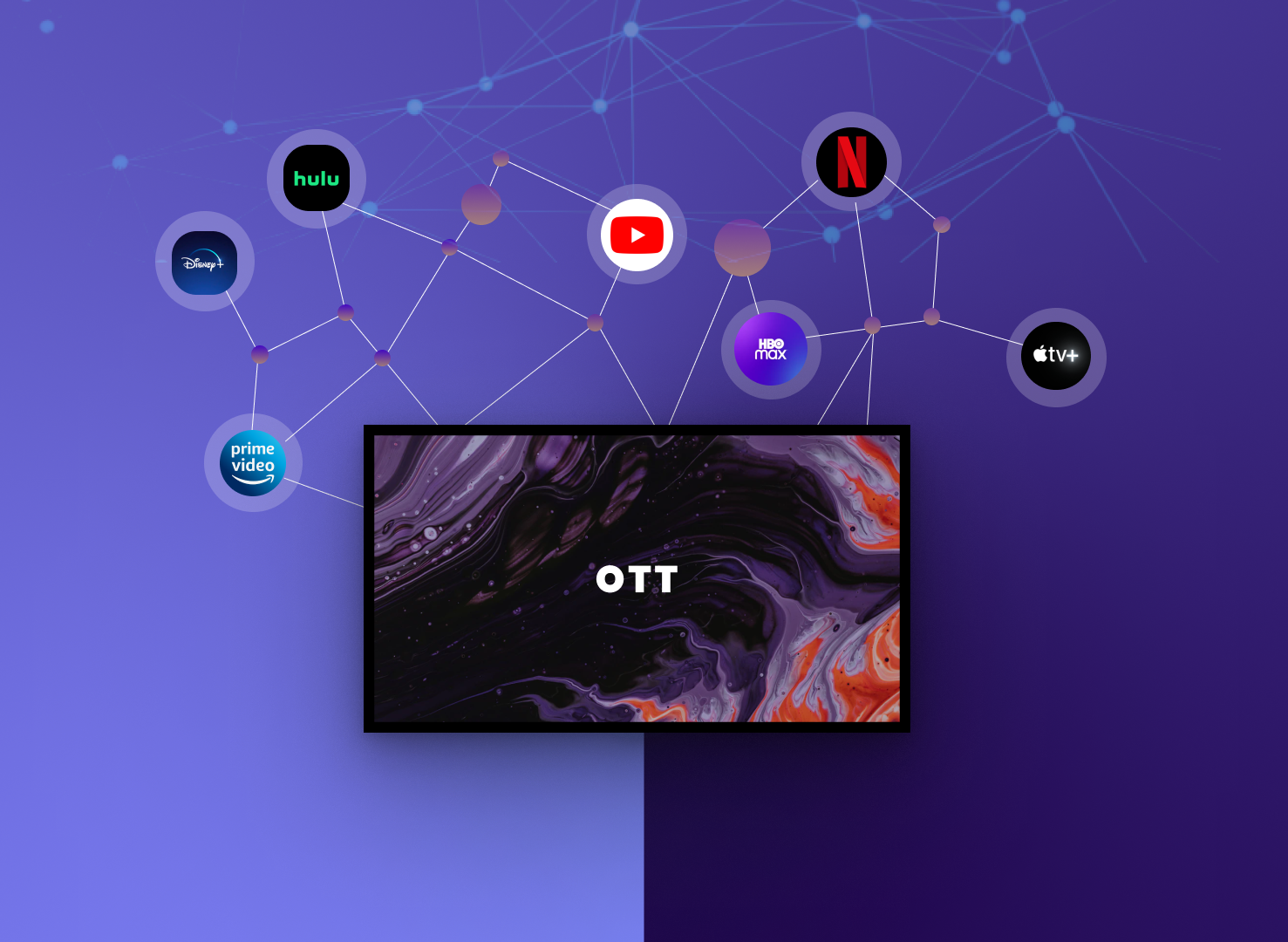Even if you don't think you use the blockchain, one of its key components is almost certainly essential to your organization.
Did you know?
Across multiple industries, blockchain technology services are estimated to deliver a corporate value-add of $176 billion by 2025 and $3.1 trillion by 2030.
While the financial industry, particularly OTT, is expected to benefit the most from blockchain, the media and broadcasting industry is aiming to use the technology to tackle some of its long-standing issues. As the market evolves, issues arise, and we'll look at how Blockchain technology can help make the OTT industry more stable and convenient than ever before.
-
Accessibility and ownership
The ownership and access to content is a long-standing issue in the internet media and OTT industries. Consider a video subscription service, where you pay a monthly fee to receive access to a platform where the videos can't be accessible anywhere else. As a result, there is a lack of transparency, as opposed to purchasing a typical cassette or CD that you own.
The issue of music ownership and sharing can be addressed at an infrastructure and protocol level by utilizing Blockchain development services. The video and music tracks are encrypted and stored forever in the interplanetary file system (IPFS) swarm.
-
Enhanced Licensing and Monetization
Blockchain has the potential to license information in novel ways. The media sector will significantly gain from the ability of video bloggers or video content providers to integrate a movie clip into their creative piece, guaranteeing that each stakeholder is adequately compensated. The special effect is added by third-party multimedia businesses for a fee of millions of dollars. During the production stage of such creative work, where content may be tracked and accessed by only authorized persons, the blockchain is unquestionably necessary.
-
Targeted Marketing and Advanced Advertising
Advertising is a multibillion-dollar business. According to a study, more than 70% of marketers struggle to target customers based on their behavior. Furthermore, nearly 60% of digital video advertisers lack the tools and data needed to measure their campaigns. But that is no longer the case. Marketing investments are more focused on using blockchain technology solutions, which allows marketers to track their efforts and efficiency. For example, the ability to track an actual impression (i.e., actual watching) and the ability for advertisers that employ agencies or platforms to evaluate ad campaigns will provide better transparency.
-
Digital Timestamping
By using digital timestamping, blockchain can be utilized to prevent content theft and unlawful usage of creative work. Digital time stamping is a phenomenon similar to a traditional notary service, with the exception that no third party is involved. In a decentralized and distributed network, blockchain acts as a trusted third party, facilitating secure transactions. Not only does blockchain make the process more cost-effective, but it also allows peer network participants to verify each transaction that is logged at any given time. Work timestamping by a specific user establishes that the creative content existed at that specific point in time, obviating any possibility of content theft or other illegal activity.
-
Easy Transactions and Micropayments
Micropayments between users and content creators can be made online without any transaction fees or service charges thanks to the blockchain solutions provider. The user can utilize a bitcoin wallet to monetise their monthly expenditure by using a Blockchain-enabled browser. The browser can then request license information from the public Blockchain and examine the loaded material using content IDs. As a consequence, it takes advantage of on-chain payment to make the transaction between the user and the content owner as simple as possible.
-
Blockchain-Powered CDN
Customers all over the world have a lot of free space on their devices, whether it's a computer, a tablet, or a smartphone. Decentralized apps can be built on top of blockchain as a decentralized management system. As a result, the collective unused space can be leveraged for blockchain-based peer-to-peer cloud storage and data transport network by employing blockchain as a decentralized management system. Users can share bandwidth or storage space with other users on the same network using these services. The parties can conduct business using crypto assets.
Final Thoughts
Regardless of the fact that widespread adoption of blockchain development services by the broadcast business is still a long way off, the industry is certainly being dragged towards innovation and opportunity.
There's no doubt that blockchain will soon help shape the future of the industry for the better, as it has the potential to address long-standing issues like infrastructure costs, transactions, rights management, and revenue share through distribution, as well as create entirely new sources of revenue.



